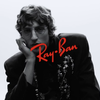The writer, a doctoral student at the Business School, recently returned from a month in Mexico, part of which was spent at the University of Mexico talking to student revolutionary leaders. The following report is based on details provided him by these student leaders.
"Make Love" said the medallion hanging from the neck of bright-eyed long-haired student. "I would have added 'Not War' and 'Peace,'" said the student, "but this is not a time of peace here in Mexico--it's a time of revolution!"
The University of Mexico complex hummed with the enthusiasm of 15,000 students for whom this was the center of revolutionary operations. Hands and clothes were dirtied from the ink of freshly printed leaflets. These were to be distributed to students, working people, parents--anyone who could read and respond. "The government is deaf to our voice so we must speak louder and clearer," one student said.
On September 12, there were 200,000 students in Mexico City and about another 200,000 students outside of the city who were on strike. Classes had been suspended indefinitely.
This state of paralysis was the result of repeated police brutality in suppressing student demonstrators. "It started so foolishly, and could have been stopped so easily," said a student, "but even today the president adds wood to the fire or our movement by refusing to respond to our requests. He brands us communist and pressures the press into spreading lies and distorting the truth."
It all began on July 23 with a fight between students of two high schools. The police riot squad (the Granaderos) intervened and used clubs and rifle butts to disperse the students. Several students were seriously hurt. In Mexico, the high schools are part of the University system. The Mexican constitution states that the University is to be autonomous -- i.e., self-governing and self-policing. The use of city police to break up a high school riot is thus in violation of the constitution.
The two high schools responded by organizing a demonstration for July 26. The government granted them permission to hold the demonstration. It had also, however, given permission for the annual pro-Cuba parade to be held in the same place. The pro-Cuba demonstrators were supporters of Castro and thus considered Communist. When the two demonstrations came close to each other the police intervened with clubs and guns on the pretext of stopping a riot. Thirty-six prisoners were taken (one of them was Pete Seeger's daughter).
Bazooka
July 27-31 saw large-scale efforts at organizing high school students to protest the police brutality. Pressure was applied on the government by seizing public buses and building road blocks near the schools to prevent the police from coming near the high schools. More police brutality ensued. Students started sleeping over-night in the schools to keep the police out. On August 1 at 2 a.m., the Mexican army surrounded one of the high schools. The more than 100 students sleeping there were told to leave. When they refused, an army bazooka was used to blow open one of the doors. The army then marched in and forcibly pulled out the students. 20 students were hurt and three or four were killed. The army took the bodies of the dead students and burned them -- afterwards claiming that no one was killed. As far as the army was concerned, these students had just disappeared. All the students were taken to jail. Many injured students were left bleeding all night in jail before being taken to the hospital in the morning. Most of the students were released the next day. About 20 are still prisoners.
Subsequent to this event, tanks and soldiers started patrolling the streets. Any students found speaking against the government were arrested, in effect abolishing freedom of speech. By now the entire student population of Mexico City was incensed. Universities joined the high schools in their protests. A student organization to direct the opposition to the government started to form during this period.
During the following week the army surrounded and took three high schools and two technical schools. The president of Mexico was in Guatalajara at the time. He made no comment on the situation in the capital. His silence was as good as approval of the actions of the soldiers.
On August 3 the principal of the University of Mexico placed the flag at half mast as a symbol that the autonomy of the University had been violated. During this period more students "disappeared." Some were killed, some made prisoners. In an attempt to move the government to action, the buses previously captured were burned. The newspapers (most of which are controlled by the government) branded the movement as "communist-inspired." They traced the movement back to the "communist" pro-Cuba demonstration and claimed that the students were being incited to riot and demonstrate by non-student communist forces. (This was clearly not the case -- the communists played little part in the events up to this point and were to play an even smaller part in the events that were to follow.) Portraits of Che Guevara had been adopted by the students as a symbol of their movement. The students explained that as they were willing to give their lives to defend the Mexican constitution and preserve freedom of speech and the autonomy of the University, they felt that the portrait of a man who had given up everything and died for his beliefs was a fitting symbol. This was taken by the government, however, as further proof of the communist inspiration of the movement.
By August 6, both the University of Mexico (80,000 students) and the Politecnico (70,000 students) had suspended classes and were on strike. They've been on strike since then and will remain so until a settlement with the government is reached. By August 8, all the schools in Mexico City were on strike. A National Committee of Strike (Consejo Nacional de Huelga) was formed and elections were held on August 8.
Dissolve the Granaderos
On August 13 a large demonstration was held. 60,000 students from schools all over the city were led by the principal of the University of Mexico and faculty from each of the participating schools. A six-point plan was drafted and published in some of the newspapers as well as distributed in leaflets to thousands of people. The government still made no official statement on the situation.
Read more in News
Carter Calls for Race Discussions












